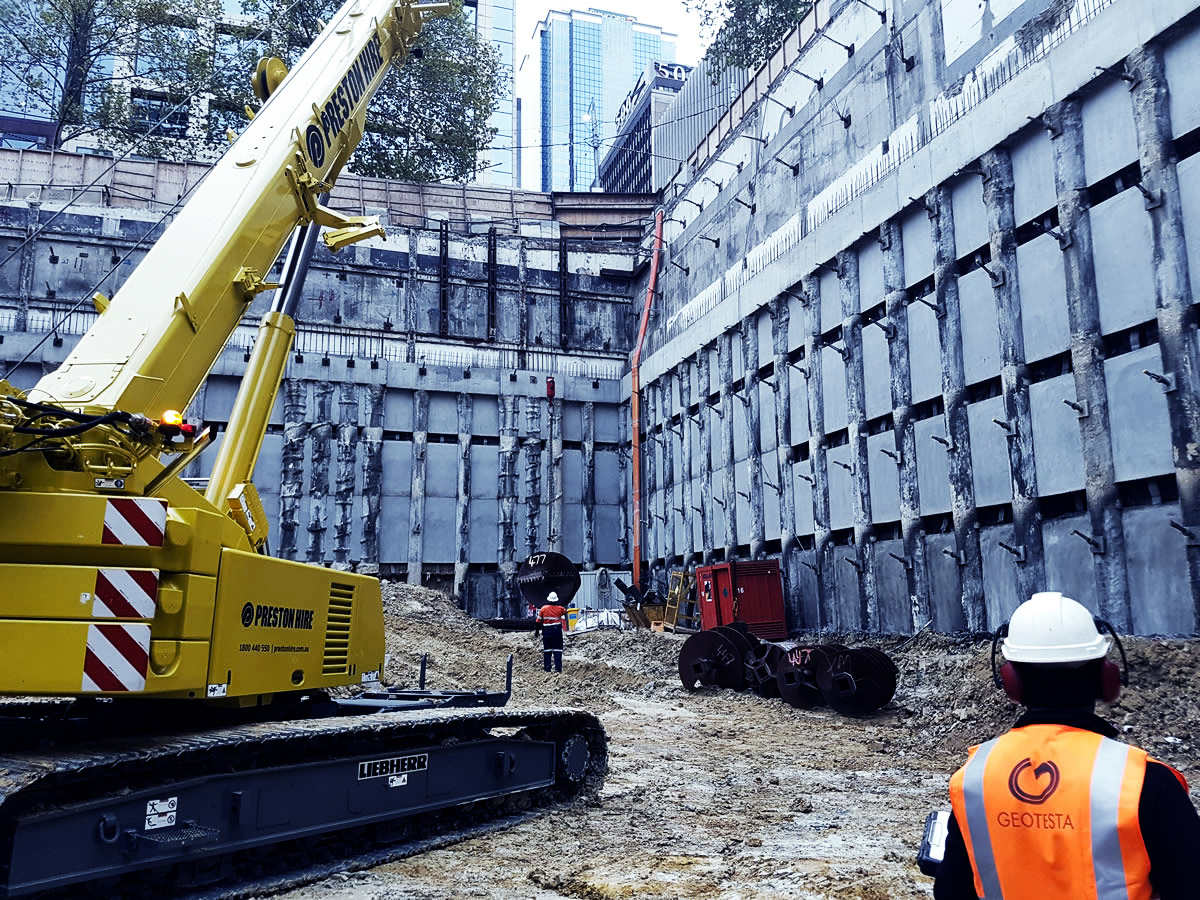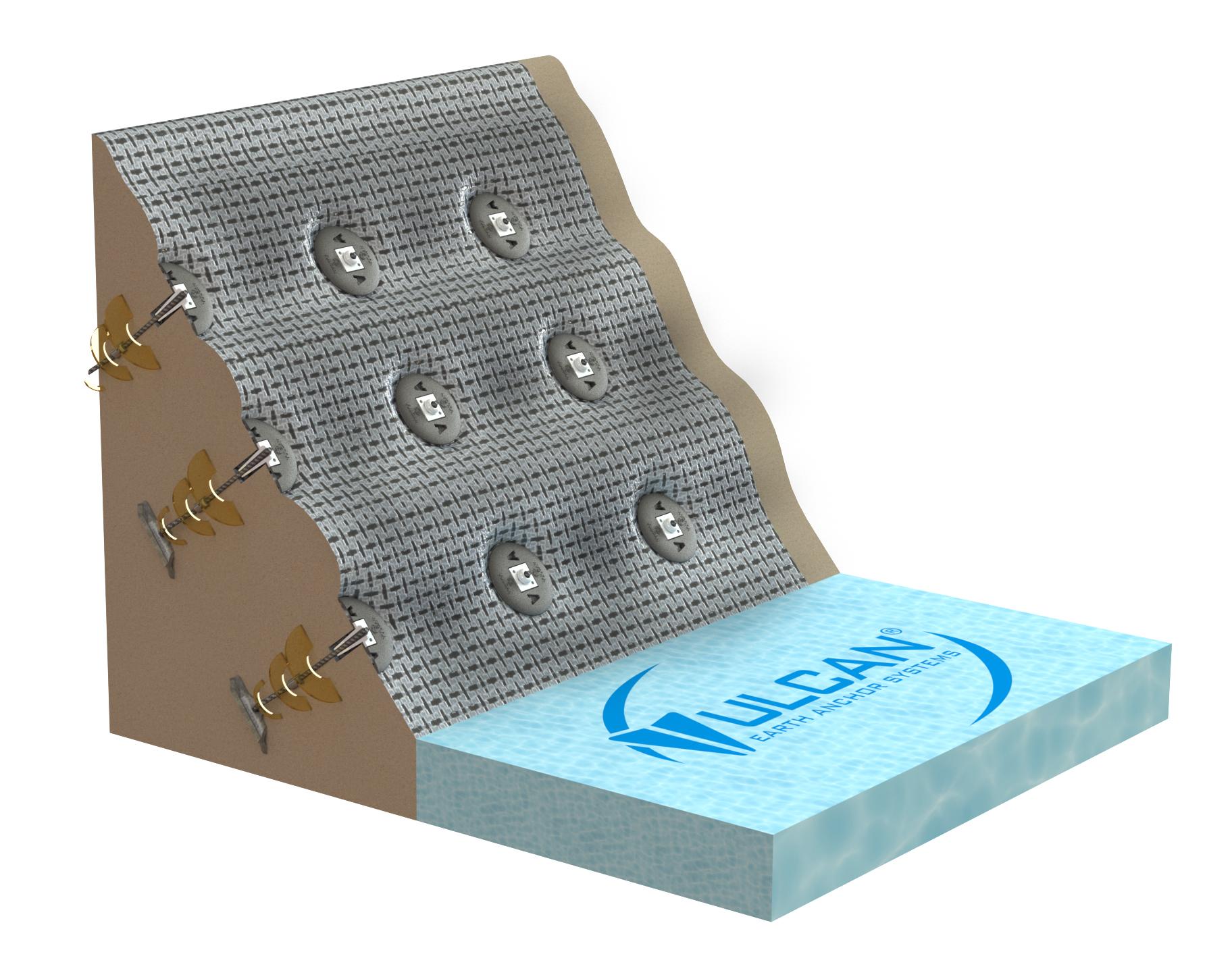How Sturdy Earth Anchors Work: A Comprehensive Overview to Soil Anchoring Solutions
Durable Earth anchors play a vital duty in offering stability and assistance in numerous building and construction applications. By installing deeply into the ground, they stand up to lateral and vertical pressures successfully. Different types of supports deal with numerous soil problems, making them versatile. Recognizing their auto mechanics and installment methods is necessary for making the most of efficiency. What elements affect their performance, and how do they compare to traditional approaches? The answers may stun you.
Comprehending Sturdy Earth Anchors
Heavy-duty Earth supports work as important parts in various building and landscape design tasks, offering stability and support in challenging dirt conditions. These anchors function by being embedded into the ground, where they resist side and vertical pressures. Their design enables secure attachment to structures, ensuring they remain secured against dirt movement or external loads.The effectiveness of durable Earth supports mainly depends upon the kind of soil and the support's installment deepness. Correct setup methods are vital, as they establish the support's holding ability. Environmental variables, such as wetness and freeze-thaw cycles, can additionally affect performance.These supports are regularly made use of in applications varying from safeguarding fences and preserving wall surfaces to maintaining momentary frameworks during unfavorable weather. Comprehending the concepts behind durable Earth anchors is important for experts looking for to improve the resilience and safety and security of their tasks.
Sorts Of Heavy-Duty Earth Anchors
Numerous sorts of sturdy Earth anchors are created to meet details requirements based on dirt problems and job requirements. Helical anchors, featuring screw-like blades, work in softer soils, offering high tons capacities and very easy installment. Driven supports, which are hammered right into the ground, appropriate for rocky terrains and provide prompt lots assistance. Tie-back anchors are generally utilized in retaining wall applications, enabling for lateral assistance by anchoring right into the ground at an angle. Another kind is the cast-in-place anchor, perfect for concrete applications, as they are incorporated right into foundations for enhanced security. Ultimately, dirt screw anchors are flexible alternatives that can be utilized in numerous soil types, providing trustworthy tension and compression capacities. Each type offers distinctive applications, guaranteeing security and safety and security in building and landscape design projects. Comprehending these options permits for informed decisions in selecting the suitable Earth securing service.
The Mechanics of Soil Anchoring

Comprehending the auto mechanics of soil anchoring requires an exam of different sorts of Earth supports and their installment methods. Each anchor kind offers unique characteristics that affect its effectiveness in different soil problems. Proper installation methods are vital for maximizing the anchoring system's stability and efficiency.
Types of Earth Anchors
Earth supports, essential parts in dirt anchoring systems, can be found in several types, each created for particular applications and dirt problems. One of the most usual kinds include screw anchors, which are turned right into the ground, providing solid side resistance. Helical anchors include blades that permit efficient installation in numerous soil types, making them ideal for both short-term and long-term applications. Driven supports, commonly made from steel, are inculcated the soil and work in dense or rocky atmospheres. Auger supports make use of a helical style to help with installation in softer soils. Ultimately, plate supports are composed of a flat plate buried flat, distributing tons over a larger area, ideal for applications calling for high tons capacities in natural dirts.
Installation Strategies Clarified
Proper installation methods are essential for the efficiency of dirt anchoring systems. The procedure typically begins with website assessment, verifying the chosen place can sustain the support's tons. After establishing the right anchor kind, correct hole deepness and angle should be developed. The installment entails driving the support into the ground using customized equipment, such as hydraulic or manual drivers, to achieve ideal embedment. Post-installation, tensioning the anchor is crucial to assure stability; this is usually validated with lots testing. Furthermore, surrounding soil conditions must be kept track of to protect against displacement. Complying with these techniques not only improves the support's performance however additionally prolongs its life expectancy, providing dependable assistance for various applications.
Applications of Heavy-Duty Earth Anchors
While durable Earth supports are frequently connected with construction and landscaping, their flexibility reaches a selection of applications across various markets. In civil design, they provide crucial support for keeping wall surfaces, guaranteeing security in locations vulnerable to soil disintegration. The aquatic industry makes use of these supports for safeguarding anchors and marinas, protecting against movement brought on by currents and tides. Additionally, in the telecommunications sector, heavy-duty Earth supports are substantial for supporting cell towers and various other high structures versus wind forces. Agricultural applications additionally profit, as these anchors can safeguard frameworks like greenhouses and animals secure fencing, ensuring they hold up against harsh climate condition. Moreover, in renewable energy projects, such as wind ranches, Earth supports play a crucial duty in protecting wind turbine foundations, enhancing total safety and security and performance. This broad range of applications highlights the adaptability and integrity of durable Earth anchors across different areas.
Advantages Over Typical Anchoring Techniques
Typical anchoring techniques have actually long been relied upon for security, sturdy Earth anchors supply substantial benefits that enhance More Info performance and effectiveness. One significant benefit is their superior load-bearing capability, which allows them to hold up against greater forces without failure. This stamina makes them ideal for demanding applications, such as in construction and energy installations.Additionally, sturdy Earth anchors are developed for much deeper installment, providing higher stability in various soil conditions, including loosened or sandy soils. Their resistance to rust and environmental browse this site variables ensures a much longer lifespan and reduced upkeep costs contrasted to traditional methods.Moreover, these supports can be set up with minimal disruption to the surrounding location, protecting the integrity of the landscape. Generally, durable Earth supports present a efficient and dependable option for securing demands, exceeding the constraints typically connected with standard anchoring methods.
Installation Process and Ideal Practices
The setup process for soil anchoring solutions starts with detailed preparation and website analysis to assure peak performance. Following this, a detailed installation guide gives clear guidelines for reliable application (construction site anchors). Adhering to these ideal methods is crucial for accomplishing durable and reputable anchoring outcomes
Prep Work and Site Analysis
Reliable prep work and detailed site analysis are essential action in the installment of dirt securing services. Before setup, the dirt type should be analyzed to establish its bearing capacity and viability for anchoring. Carrying out a geotechnical study can give vital info about dirt make-up, wetness levels, and potential ground motion. In addition, determining existing frameworks, vegetation, and energies is necessary to stay clear of interference throughout setup. The area should be cleared of particles and obstacles to guarantee risk-free access for devices. Climate condition must additionally be kept an eye on, as adverse conditions can impact both safety and security and installment efficacy. By diligently preparing the website and reviewing all appropriate aspects, the likelihood of successful anchor performance is considerably enhanced.
Step-by-Step Setup Overview
A detailed installment process is important for attaining suitable efficiency of dirt securing options. The installation begins with choosing the proper support type and guaranteeing the site is clear of debris. Next, correct opening positioning is figured out based upon load demands. When the place is developed, openings are pierced to the defined deepness and diameter utilizing the proper devices. The support is after that placed into the hole, ensuring it is straightened correctly. After securing the anchor, dirt is backfilled and compressed to boost security. It is vital to comply with maker guidelines throughout the process. A post-installation inspection confirms that the anchors are properly located and operating as planned, supplying trustworthy support for the desired application.

Upkeep and Assessment of Earth Anchors
Normal upkeep and examination of Earth supports are vital for guaranteeing long-term efficiency and security. Regular checks enable the early discovery of problems such as deterioration, loosening up, or dirt motion. Assessors must search for indicators of corrosion or degradation on the anchor parts, particularly at the connection factors. In addition, the surrounding soil must be evaluated for disintegration or modifications in dampness content, which can affect anchor effectiveness.It is a good idea to develop a routine inspection schedule, ideally a minimum of yearly, depending upon ecological you can check here problems. Throughout examinations, all visible components must be cleaned to get rid of dust or particles that might conceal possible troubles. Any kind of signs of distress, such as tilting frameworks or uncommon settling, need to prompt instant examination. Proper paperwork of examinations can help in tracking anchor performance gradually and assist in prompt upkeep actions, guaranteeing the anchors remain functional and reputable.
Often Asked Questions
What Materials Are Heavy-Duty Earth Anchors Typically Made From?
Heavy-duty Earth supports are typically constructed from sturdy materials such as galvanized steel or stainless-steel, making certain toughness and resistance to corrosion. These materials give durable support and security in numerous soil conditions and applications.
Exactly How Do Dirt Conditions Affect Support Efficiency?
Dirt problems substantially influence support performance. Variables such as soil kind, dampness material, and compaction influence the support's grip and security, with cohesive soils typically providing better resistance than loosened or sandy soils, influencing overall effectiveness.
Can Heavy-Duty Earth Anchors Be Recycled After Elimination?
Durable Earth anchors can be recycled after elimination, provided they are checked for damages and wear. Appropriate cleaning and maintenance enhance their longevity, guaranteeing reliable performance in subsequent installments when problems enable safe reinstallation.
What Are the Ecological Effects of Making Use Of Earth Anchors?
The environmental influences of using Earth anchors include possible soil disruption, disruption of regional ecological communities, and possible contamination of groundwater. If made use of properly, their advantages often exceed these problems, advertising security in various applications.
Exactly how Do I Pick the Right Support for My Task?
